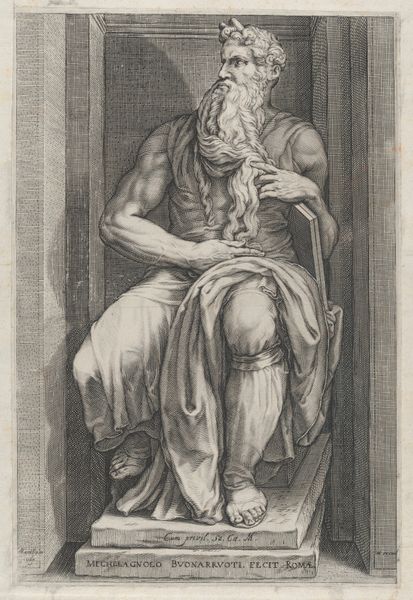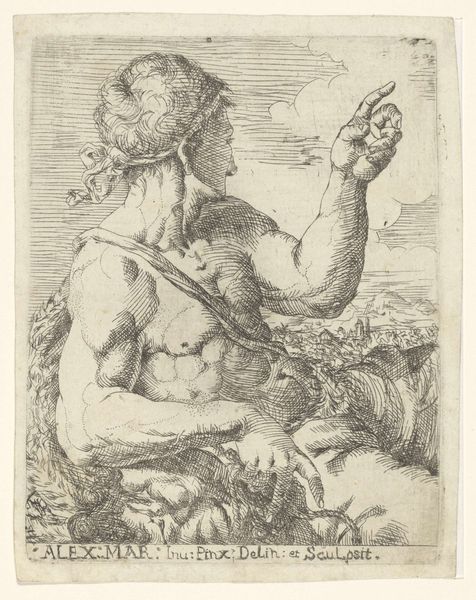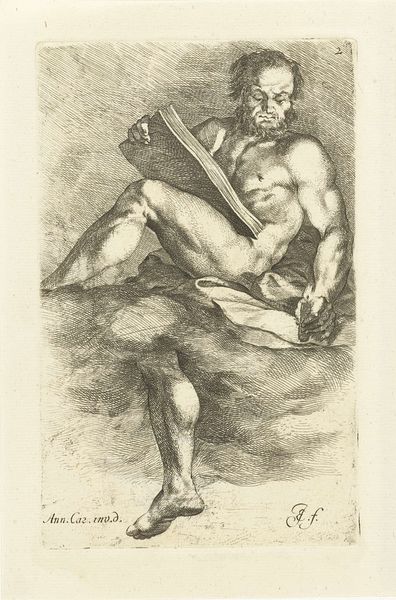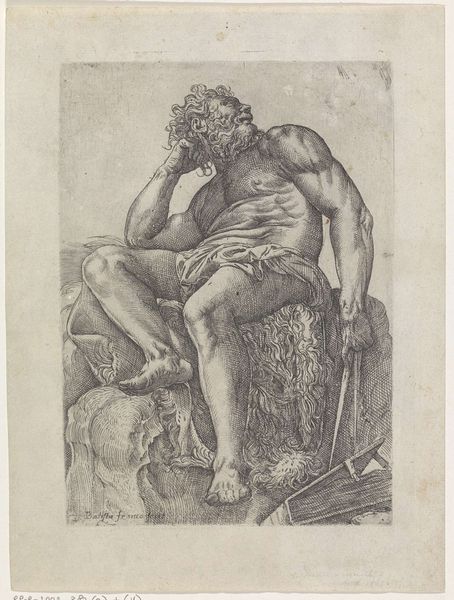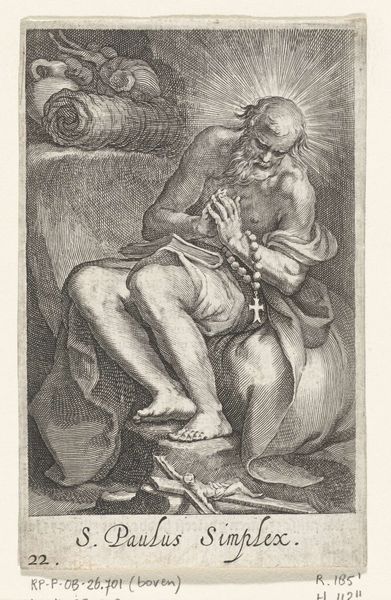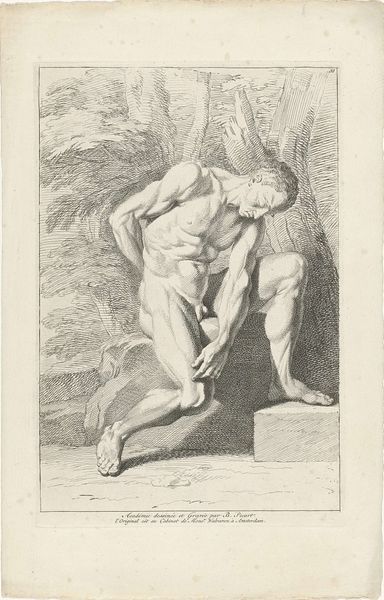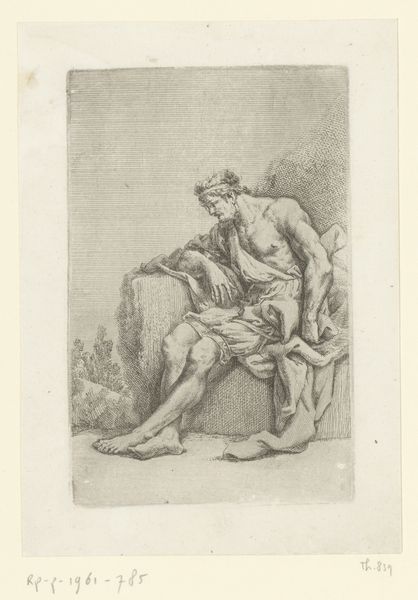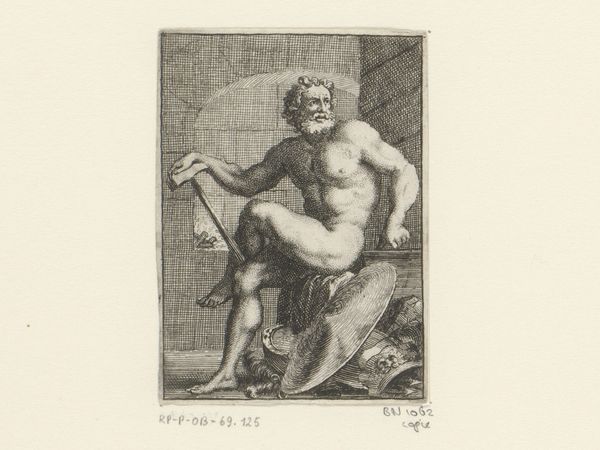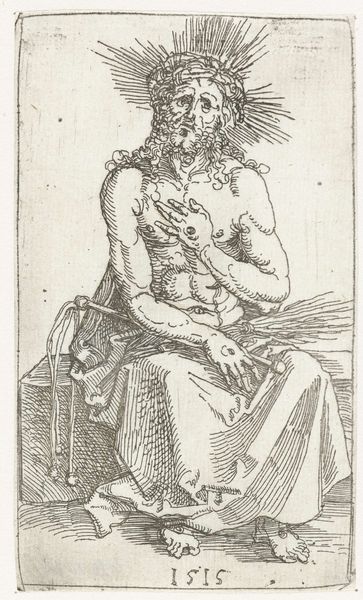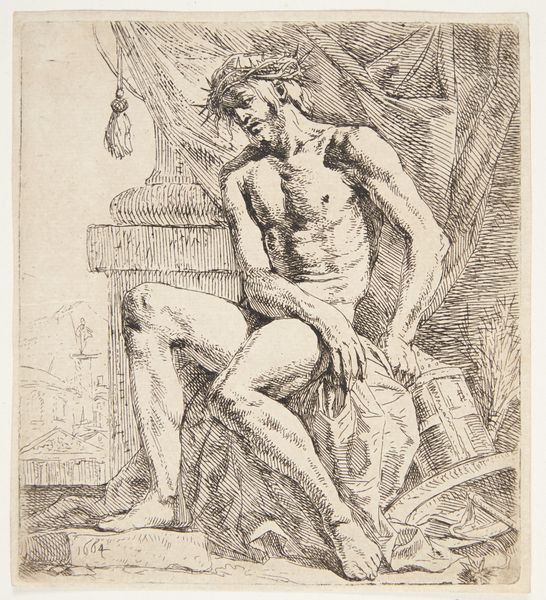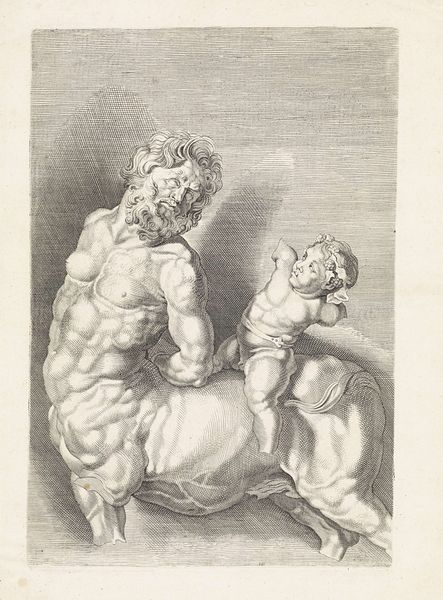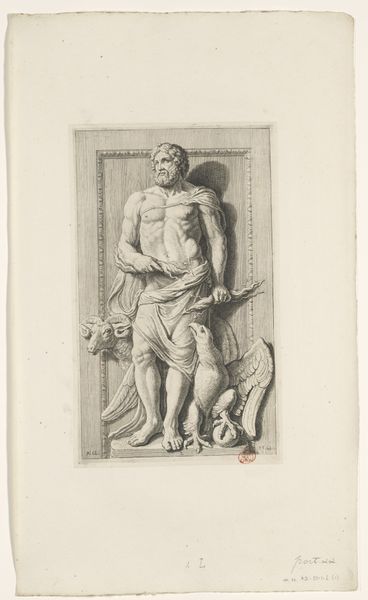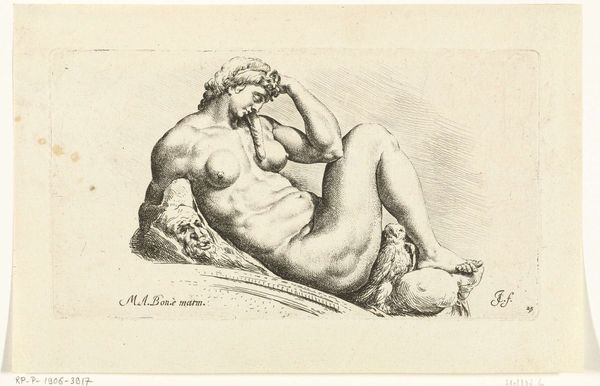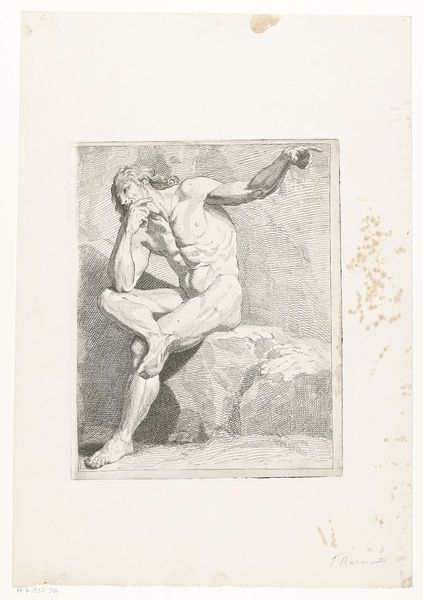
drawing, print, etching
#
portrait
#
drawing
#
baroque
# print
#
etching
#
figuration
#
line
#
history-painting
Dimensions: height 232 mm, width 112 mm
Copyright: Rijks Museum: Open Domain
Curator: This etching presents Jan de Bisschop’s “Moses with the Tablets of the Law," dating from around 1666 to 1671. Editor: The first thing that strikes me is the figure’s muscularity and brooding intensity, particularly conveyed through the sharp, almost frantic etching lines. There's a tension there, almost suppressed rage. Curator: Yes, it’s quite powerful. De Bisschop, although trained in law, was deeply involved in artistic circles, championing classical ideals. He often drew inspiration from other artists' work; in this case it seems likely from sculptures or paintings circulating at the time. The etching process allowed for wider distribution of imagery, thereby democratizing access to classical and biblical themes, influencing artistic tastes across different social strata. Editor: It's fascinating how Moses is so often depicted with horns. In reality, it’s likely a mistranslation from Hebrew where the word for "rays of light" was confused with "horns". Still, it adds this archaic, almost pagan element, doesn’t it? These subtle visual cues build a powerful character that evokes a whole history, or perhaps layers of cultural history and interpretation. Curator: And he certainly has some impressively chiseled arms. Jan de Bisschop was very interested in form; disseminating that understanding, making art and its influences available for a broader audience. It highlights a network, showing how images become part of a broader intellectual discussion. Editor: It also reminds us that artistic depictions aren't neutral; they're always interpreting, emphasizing, and yes, sometimes even misinterpreting the original sources. This image is loaded with symbolism, not just the Tablets but also the artist's decision to present Moses this way. It invites viewers to contemplate justice, divine law, but also humanity's struggles with faith. Curator: The image leaves us with the thought about how social change also takes time to come about, just as these traditions developed over long periods of interpretation. Editor: An important reminder that imagery never truly settles; that’s the beauty of the visual language and what makes art endlessly captivating.
Comments
No comments
Be the first to comment and join the conversation on the ultimate creative platform.
